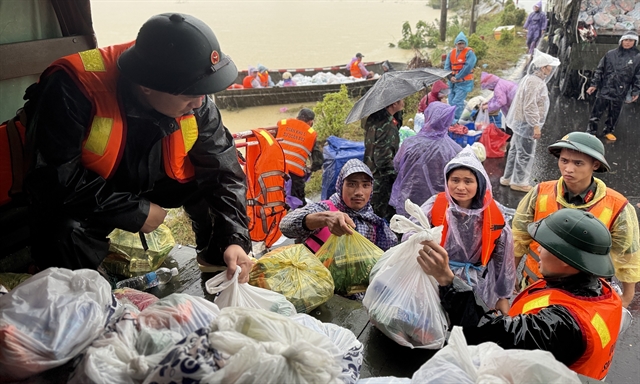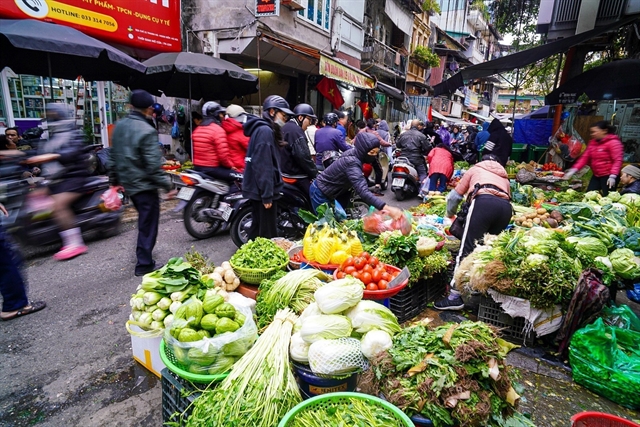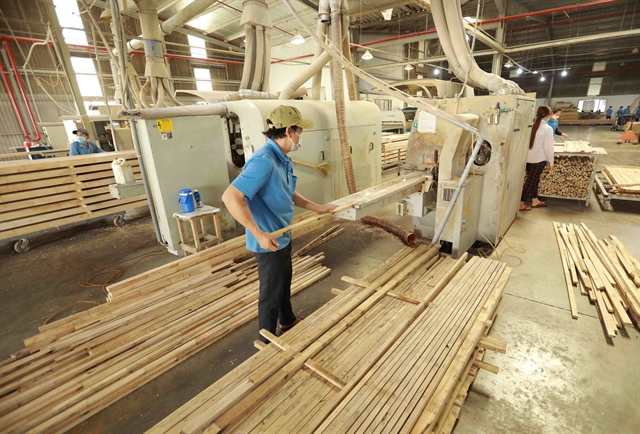 Society
Society


|
| People set traps to catch field crabs in the upstream area of Đồng Tháp Province.—VNA/VNS Photo Nhựt An |
ĐỒNG THÁP — With the floodwaters rising in Thường Lạc Ward, in the Mekong Delta Province of Đồng Tháp, Trần Văn Nguồl is back in action, busy setting up long net traps to catch fish.
Each day, he hauls in the traps morning and afternoon, collecting between 20 and 30 kilos of fish including lady carp, gourami, minnows and perch.
Nguồl said he has deployed more than 10 net traps across the submerged fields this year, each measuring around 100 metres in length.
Selling at between VNĐ5,000–10,000 (US$0.20–0.40) per kilogram, the catch is either processed into fish sauce or used as feed for farmed species such as clown knife fish and snakehead.
The work provides him with a reliable source of daily food and helps supplement the family income, easing household expenses.
As the annual flood season returns, farmers across the province are once again embracing traditional livelihoods sustained by the influx of water.
In recent days, alluvial floodwaters from upstream have begun to inundate rice paddies, signalling the official start of the season.
In the upstream areas of the province, vast stretches of farmland now lie under water, bringing with them the bounty that locals like Nguồl are quick to make use of.
Trần Văn Buôn from Thường Phước Commune has temporarily left wage-labour work behind to focus on fishing.
Starting from 5am, he casts out 10 nets, each roughly 50 metres long, yielding an average of 3 kilos of fish per day.
The cheaper species — such as naked catfish and bighead carp — are kept for the family table, while more valuable catches like catfish and Bagridae are sold, earning him upwards of VNĐ200,000 (US$8) per day.
This year, Buôn noted, the floods have arrived around two weeks earlier than last year and the water level is several inches higher.
“I just hope it stays moderate, with plenty of fish and little turbulence, so we can have what we call a ‘beautiful flood season’,” he said.
Meanwhile, Bùi Văn Dự of Thường Phước Ward has turned to trapping field crabs in flooded paddies and irrigation canals to make a living.
Ordinarily employed in construction, he switches to crab trapping during the flood months — a job he finds both more enjoyable and more lucrative.
With around 150 traps, he collects about 5 kilograms of crabs per day, selling them at VNĐ50,000 ($2) per kilogram.
During this period, traders set up collection points to gather local specialities for distribution across the Mekong Delta and beyond.
A trader in Thường Lạc Ward, Nguyễn Thị Điểm, said she purchases between 700 and 800 kilograms of fish and crabs daily to supply the delta provinces and Hồ Chí Minh City.
“Demand is huge. Whatever we buy, we sell,” she said, noting that prices have remained stable compared to last year.
She added that residents adapt their livelihoods according to flood levels: when the waters first rise, they trap frogs and snails; as the water deepens, they shift to nets and traps; and as it recedes, they use drag nets to catch loaches.

|
| Lady carp fish, a specialty of the flood season in the Mekong Delta province of Đồng Tháp.— VNA/VNS Photo Nhựt An |
Where there’s water, there’s money
With many years’ experience in fishing, Buôn summed up the season: “In flood time, where there’s water, there’s money.”
This sentiment is shared not only by fishermen and traders but also by those producing fishing gear.
In Hòa Long Commune, the air is lively as families rush to finish crab and fish traps.
The work involves shaving and polishing bamboo strips, weaving, binding and assembling them.
Orders come from across the province, as well as the neighbouring localities of Vĩnh Long, An Giang and Cần Thơ.
Peak production runs from July to September on the lunar calendar.
Phan Thị O, of Hòa Long Commune, with more than 40 years of trap-making experience, said demand this year’s flood season has doubled compared with normal times.
Her family recently worked nights to complete an order of 800 traps in just a week.
Each sells for VNĐ9,000 ($0.34), leaving her with a modest profit of around VNĐ2,000 ($0.07) after expenses.
Although sales rise during the flood season, producers note that in recent years the floods have been smaller and later, with fewer fish and shrimp than in the past.
That is why trap makers and fishermen alike all hope for a good flood season, when abundant fish and shrimp also mean thriving sales of nets, traps and boats.
This year, after the summer–autumn rice harvest, many fields across the province have been left fallow instead of being planted with a late-season crop, allowing the land to rest during the floods.
According to the provincial Department of Agriculture and Environment, controlled flooding will cover more than 107,000 ha from July to mid-December 2025.
Water depth in controlled fields will range from 0.3 to 3 metres, depending on local conditions.
Director of the province’s Meteorological and Hydrological Station Khương Lê Bình said that over the past two months, water levels have been slightly higher, by 0.1–0.3 metres, than in both 2024 and the long-term average.
Levels are expected to keep rising through September and early October, under the combined effect of Mekong upstream floods and high tides.
Overall, 2025 flood levels across the province are expected to be slightly higher than last year. — VNS




